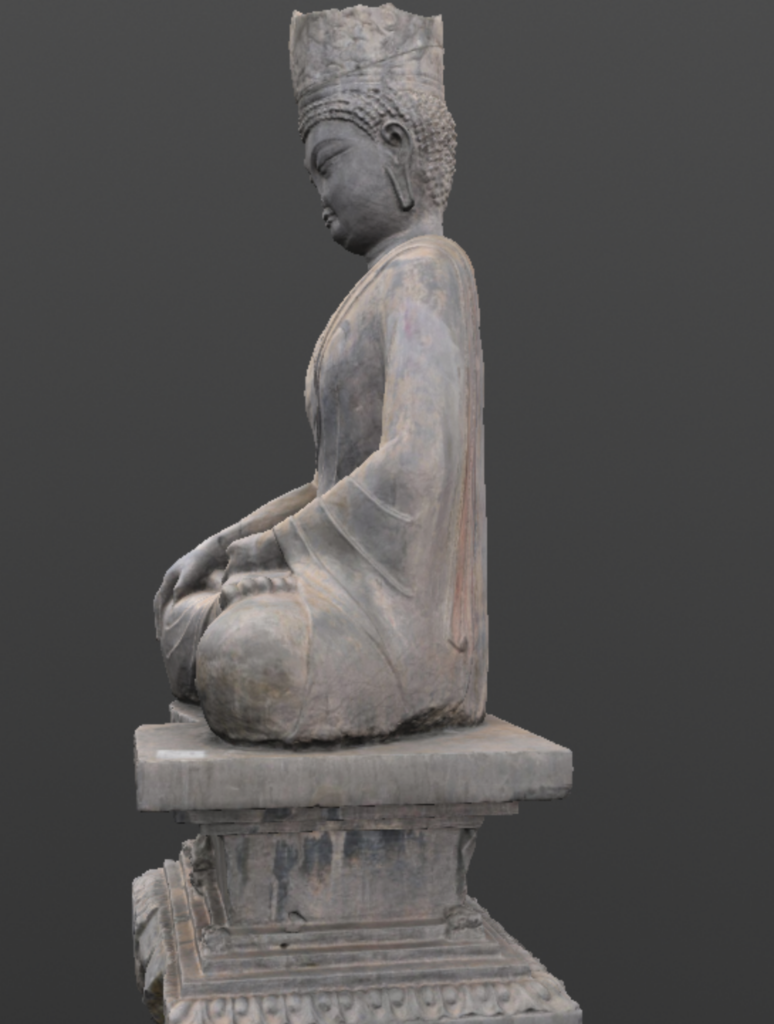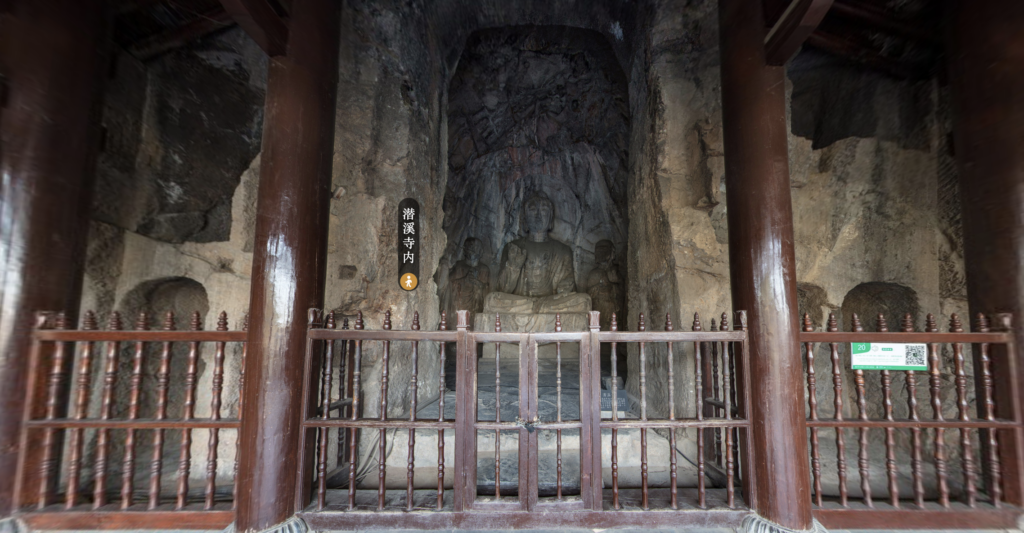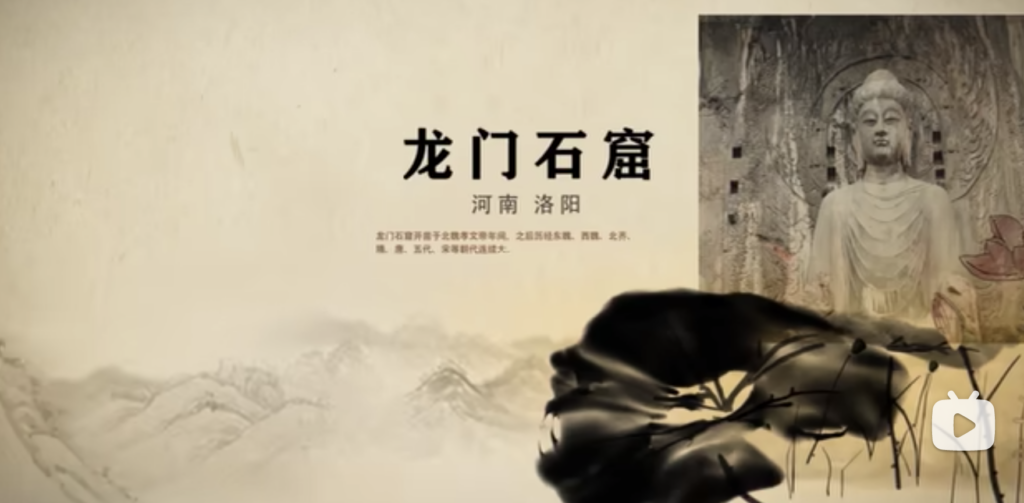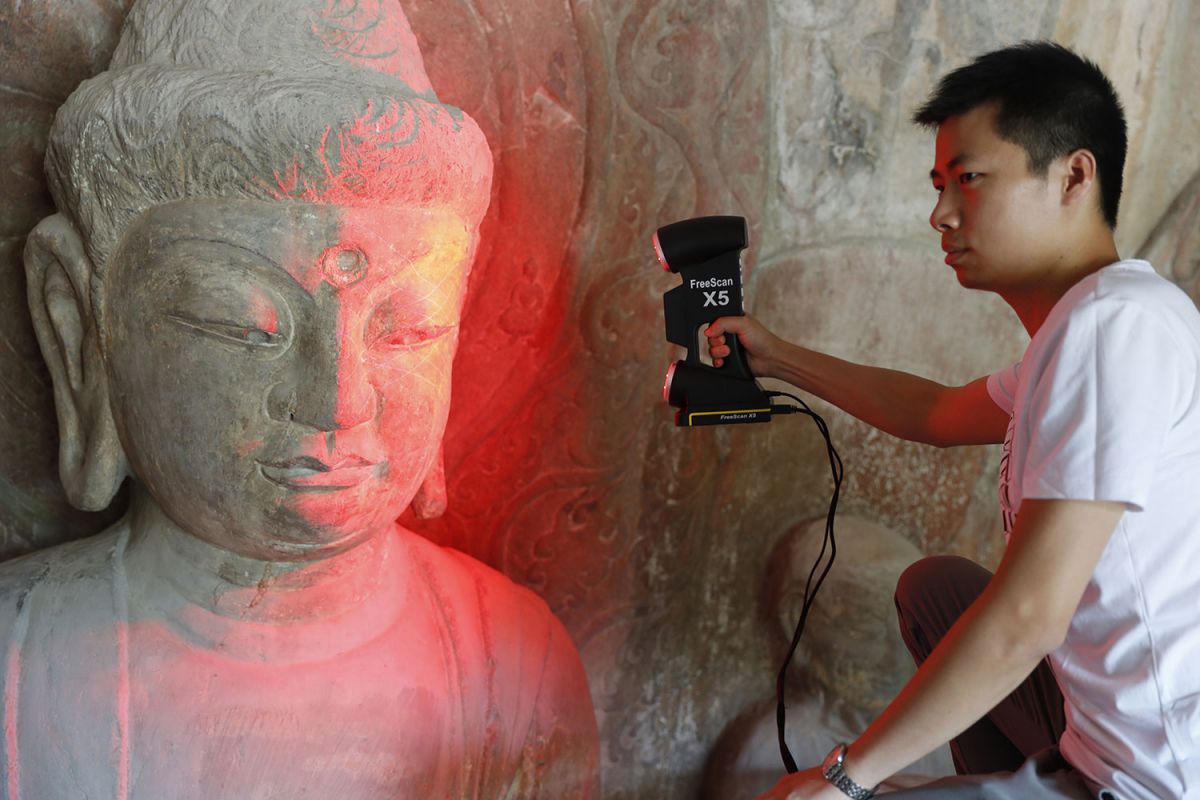
Impact of Climate Change and Preservation of Longmen Grottoes
A Century of Time
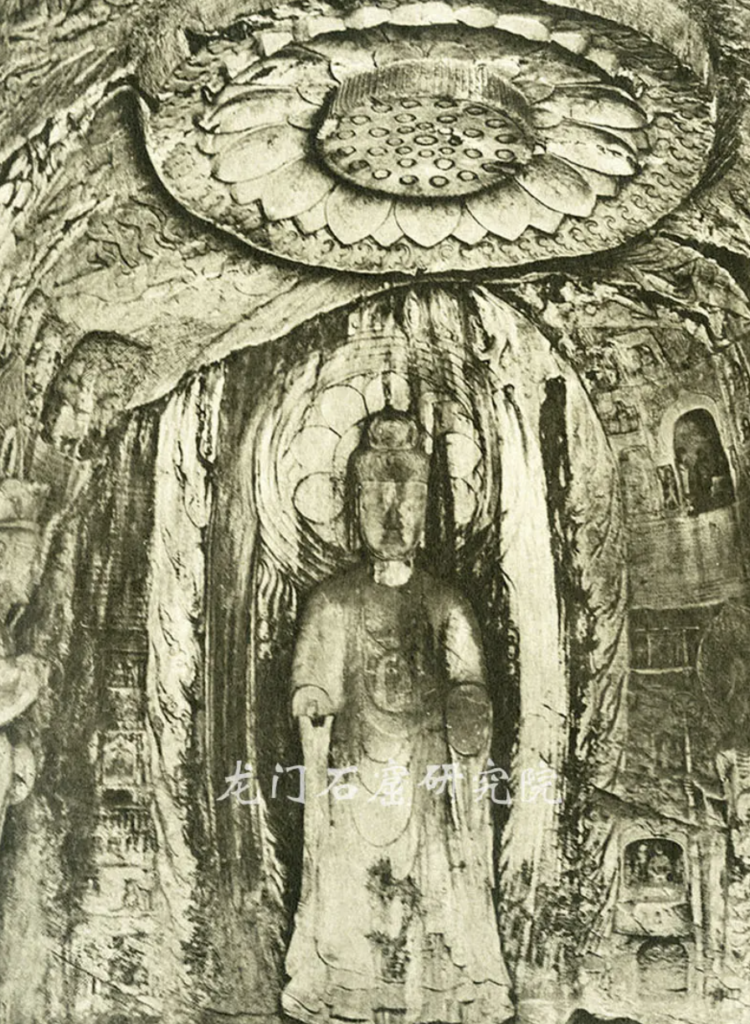
Lianhuadong A Hundred Years Ago
Photo by the Academy of Longmen Grottoes
Lianhuadong Current Status
Photo by the Academy of Longmen Grottoes
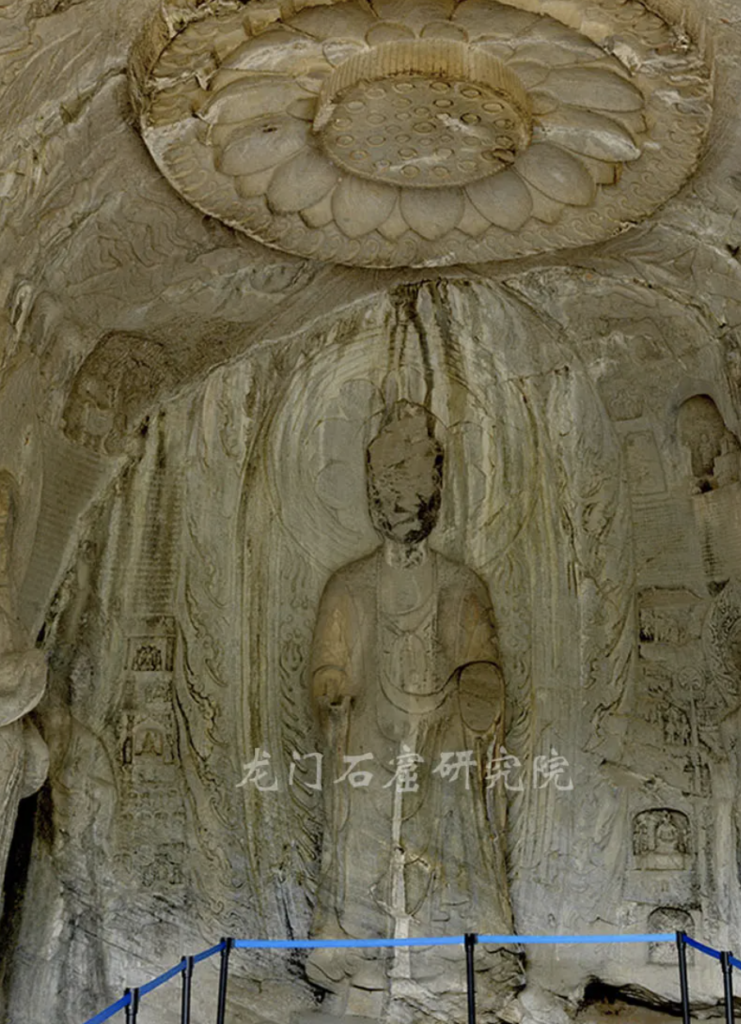

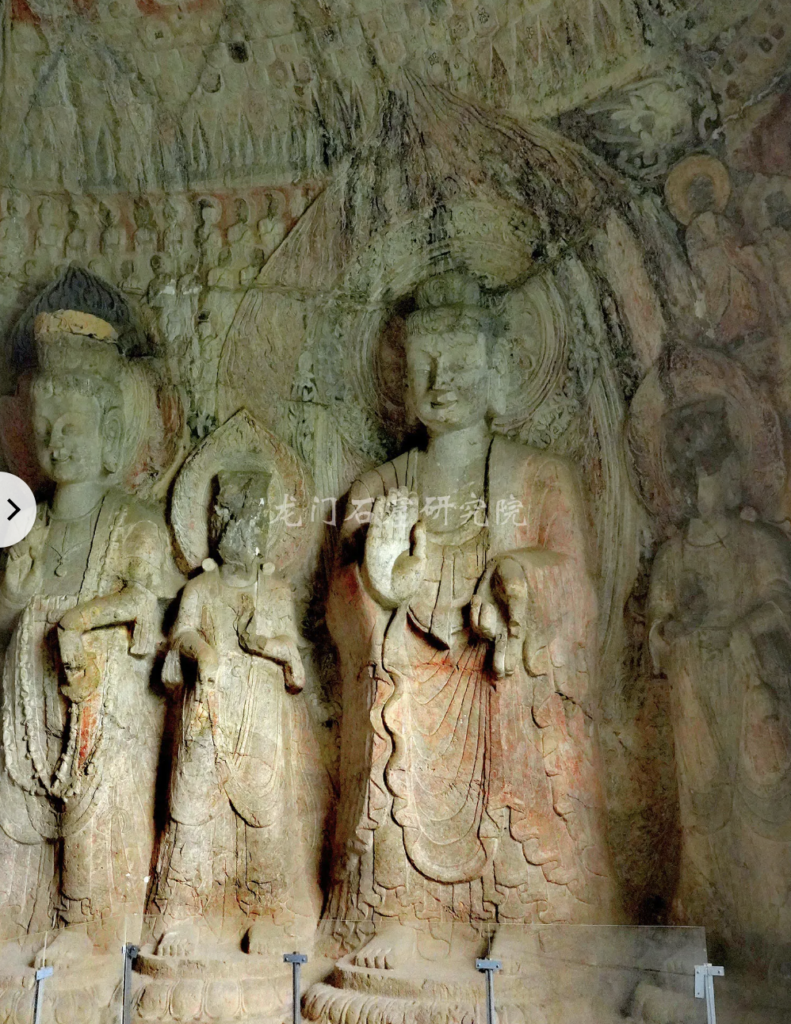
Middle Binyang a hundred years ago and current status
Photos by the Academy of Longmen Grottoes
Due to reasons such as rainwater erosion and weathering, the rock carvings in the Longmen Grottoes have become blurred over the past century. The contrast of the Buddha face in the above photos clearly shows this.
– The Academy of Longmen Grottoes
In recent years, the Longmen Grottoes area has been affected by climate change, mainly manifested in rain erosion, cave collapse, and rock cracking. According to the Academy of the Longmen Grottoes, the rainfall in the Longmen Grottoes area has increased in recent years, and the grottoes are also located near the Yi River, which has led to serious condensation water phenomena in the grottoes, adversely affecting the stability of the internal rock formations and the protection of cultural relics.
Today, a large number of stone sculptures inside the Longmen Grottoes have begun to be eroded by rainwater, further accelerating the process of rock wall collapse and ground subsidence. In addition, the carving of the Longmen Grottoes has been facing the risk of weathering, collapse, and falling for thousands of years, and has been exacerbated in the past century. The preservation of cultural relics faces even greater challenges.
More Photos of the Longmen Grottoes Changing Over The Century
https://www.lmsk.org.cn/home/hundredyears.html
Monitoring and Preservation

Monitoring
Currently, the monitoring of Longmen Grottoes mainly includes environmental monitoring, building monitoring, geological disaster monitoring, cultural relic protection monitoring, and other aspects. By regularly monitoring and assessing the environmental factors, building structures, geological disasters, etc. inside and outside the caves, problems can be discovered and corresponding measures can be taken in a timely manner to ensure the safety and stability of the caves.
Study on Disease Investigation and Quantitation, and Quantitative Testing of Condensation Water at Longmen Grottoes
Yang et al., 2018

This project designed and improved a monitoring device that can measure the occurrence time, amount, humidity, and temperature of condensation on cave walls and in the atmosphere. The project was applied to monitor condensation in the Longmen Grottoes and achieved the goal of protecting the interior of the grottoes. Through two years of monitoring, the project found that condensation in the Longmen Grottoes is very common and has serious consequences, occurring seasonally between May and September.
In terms of prevention and control measures for condensation, a method of combining dehumidification and ventilation, as well as using local auxiliary methods such as desiccants, was developed based on the principle of reducing the temperature difference between the rock surface and the cave atmosphere and lowering the humidity in the cave.
The experimental determination of important factors such as rock wall temperature and cave atmosphere temperature and humidity that affect condensation formation and their relationships and degrees of influence can be used to guide basic experiments and work on condensation prevention and control. The results of the entire condensation experiment provide a scientific basis for future long-term management.
Preservation
At the same time, the protection of Longmen Grottoes is also being strengthened. Relevant departments have increased the management of tourists, prohibiting the entry of harmful substances into the caves and reducing human damage. In addition, a series of professional protection measures have been taken for the unique environment and cultural relics of Longmen Grottoes, including controlling humidity, temperature, lighting, repairing and consolidating cultural relics, and strengthening supervision.
In the process of digital heritageisation, Longmen Grottoes first used advanced 3D scanning technology to comprehensively digitize the inside and outside of the caves. Based on this, Longmen Grottoes also used new technologies such as virtual reality and augmented reality to carry out digital exhibitions and interactive experiences, allowing more people to intuitively understand and experience the charm of the caves.

The Application of 3D Digital Technology in The Archaeology and Preservation of Longmen Grottoes
Li Xinglong, 2021
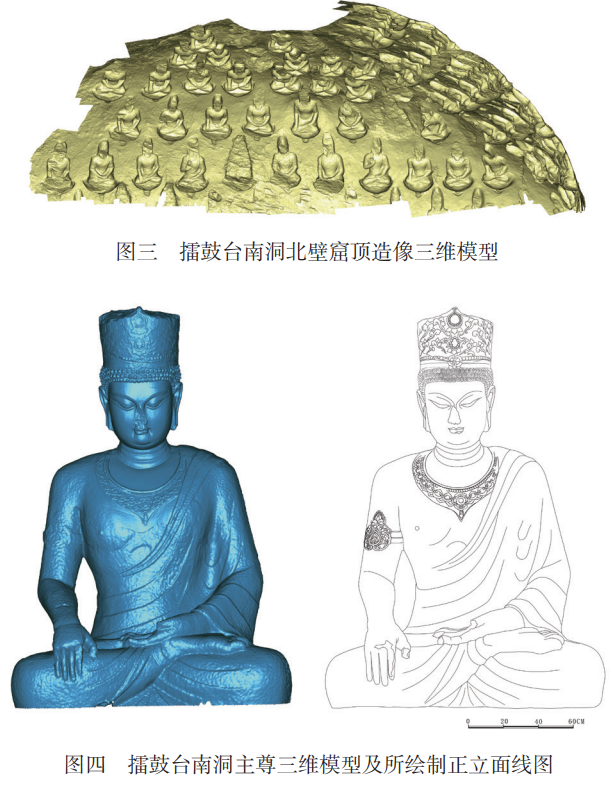
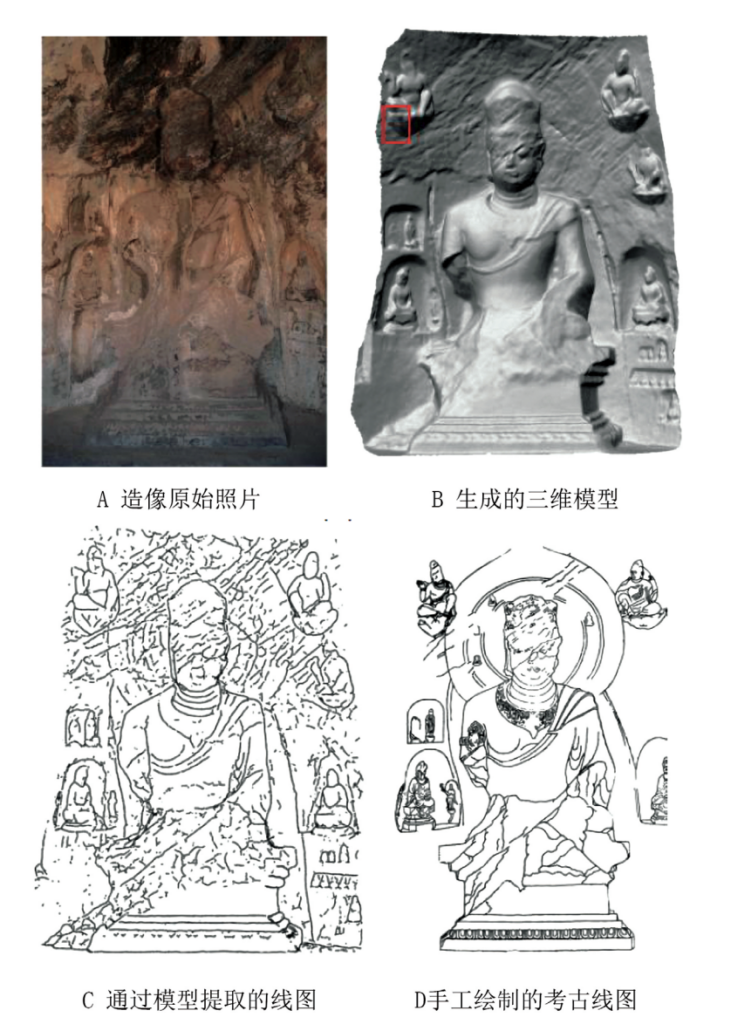
Three-dimensional laser scanning and multi-angle three-dimensional reconstruction are among the latest technological tools used for spatial information acquisition and preservation. These techniques have also been widely applied in the protection of the Longmen Grottoes.
With three-dimensional laser scanning, the caves, Buddha statues, and rock walls of the Longmen Grottoes can be digitally modeled with high precision and efficiency. This technique also enables rapid and non-destructive detection and measurement of cultural relics. Additionally, multi-angle three-dimensional reconstruction can provide more comprehensive spatial information, helping researchers better understand the history, culture, and artistic value of the Longmen Grottoes.

